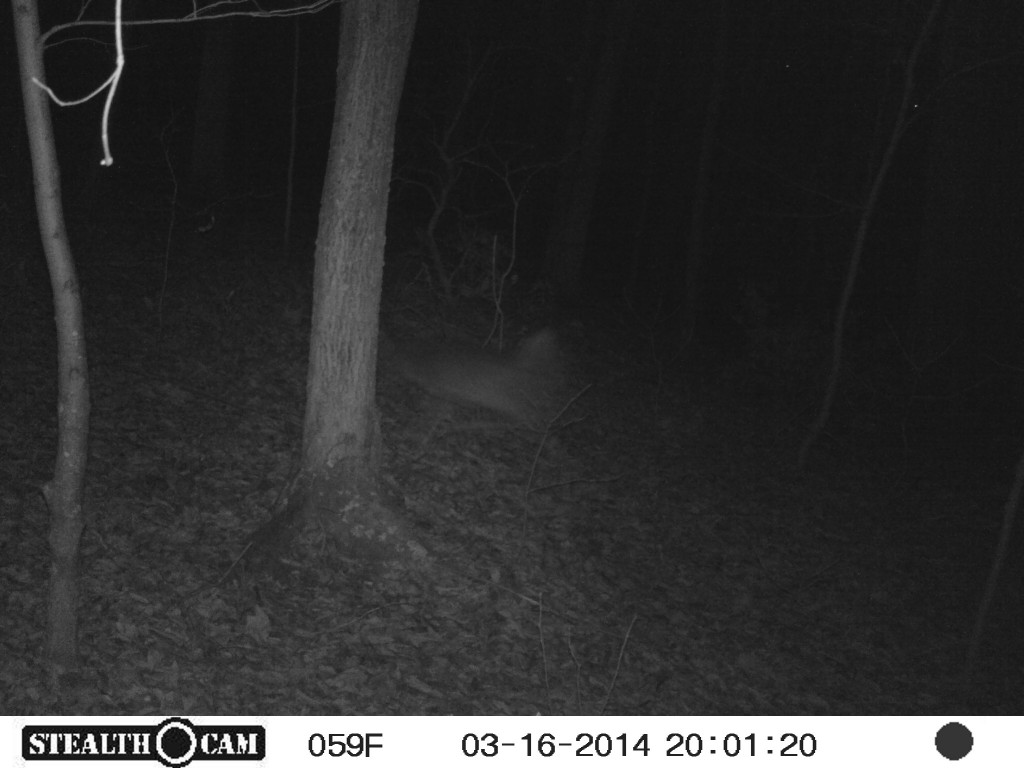Spring break was an exciting time for our progress in exploring the nocturnal life of UVA grounds. Before break we were able to set up three of our five camera traps, and now with new memory cards we were able to position all five of them around grounds. In our first week of hunting, we enjoyed some success however we also came up empty at places, prompting us to rethink our locations as well as tactics.
We decided to place our two new cameras in the garden on the rugby side of the Architecture school, and then in the central wooded area by Gooch-Dillard Residences. We chose these two places because we frequently spotted rabbits in the garden, then the Gooch-Dillard area always appears to be a squirrel heaven, hopefully bringing in some interesting pictures.
Our next camera trap which we placed in Lambeth before break has proven to be a disappointment and produced no pictures or activity. Reasons for this could be the abundance of human activity and infrastructure around the field, or simply poor placement as choosing the right spot across the entire campus can be compared to finding a needle in a haystack. In light of this lack of activity, we have decided to move the Lambeth camera to the Dell pond closer to center campus. The pond always seems to be abundant with bird life, and we also hope to catch some mammals sneaking in for a drink. An update with our success on this project will come next week.
The camera trap which we placed in the Lawn garden has proven its functionality; however it has captured only human activity, no nocturnal animal life that we are trying to document. We foresaw this as a potential problem with the amount of human traffic through the gardens, but we continued with it as it would be really neat to find out what animals roam around Jefferson’s academical village. We have now moved this camera to Carrolton Terrace on JPA where multiple stray cats as well as raccoons have been spotted. We’re hoping for great activity from this spot.
Our final camera which was placed in the IRC dorm area has proven to be our best success. With a total of 18 pictures we captured a wandering dog, some windy branches and human activity, but most excitingly a fairly blurry picture which we believe to be a deer. Catching a large mammal is about as exciting as it gets, and we look forward to continuing this trap.

What to take away from our first week of camera hunting? Placing the cameras is incredibly difficult and our success or failures can hinge on aiming a camera five feet in the right or wrong direction. Our successes have proved that there is in fact an animal nocturnal life underworld in Charlottesville, and that we will be able to find.
Where do we go from here? We hope to find more success with our newly placed cameras. At the beginning we made the group decision to not use baiting in order to produce the most natural activity results, however if our next week doesn’t prove fruitful, bating is our next step. When we consulted with Mrs. Bliss-Ketchum, the expert from Portland State, she advised using a mixture of peanut butter and oats as bait. This could be our next move as we need more activity in order to chart generalizations and patterns of the nocturnal life around grounds.
Post by Rob Wyatt, Second-Year, Commerce